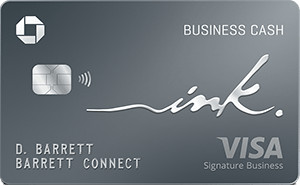⏰ Estimated read time: 5 minutes
FEATURED
What to include
- Applicants should report gross annual revenue — that is, revenue before taxes and other expenses are taken out. This is different from profit, which is revenue minus costs.
- The figures should be from the previous year. Generally, that means you shouldn’t be reporting sales projections as revenue, although some issuers may be OK with that if your business is new.
“Revenue is simply the money your business brings in. It's different from profit, which is revenue minus expenses.”
- Drive for a ridesharing service.
- Sell items online.
- Work as a freelance graphic designer.
What to leave out
- Revenue you can’t verify. Don’t report it if you can’t verify it. In some cases, issuers may ask you for paperwork to back up the numbers you reported, so it’s best to stick to what you can prove. Lying or including pie-in-the-sky predictions could cost you an approval.
- Income that’s not business-related. It might sound obvious, but if you work a full-time job and sell items on eBay as a side hustle, for example, income from your full-time job shouldn’t be considered “revenue.” However, it can be included in the “income” field of the application.
🤓 Nerdy Tip
Applications for small-business credit cards ask for information about both your business's finances and your personal finances. That's why they ask for personal "income" separately from business "revenue." Business cards require you to personally guarantee the debt on the card, so your personal finances will be considered in the approval process.What if your business is new?
The specifics: What major issuers said
- American Express: American Express asks for “Annual Business Revenue” on its small-business credit card applications. This issuer declined to provide more detail.
- Bank of America: “For credit requests, clients typically report last year’s sales when providing gross annual sales figures,” Dolor of Bank of America says.
- Capital One: “For [the revenue] section, business owners should include the gross revenue collected by the business over the past year,” Arellano of Capital One says. “Applicants should not include any revenue [or] income streams that are not directly tied to the business on the application.”
- Chase: The revenue you report on your credit card application should be “what you last reported for your business revenue before any expenses or taxes,” according to an email from Chase.
- Citi: Citi asks for “Annual Business Revenue” on its small-business credit card applications. The issuer didn’t provide further detail.
- Discover: “Applicants should include the latest available annual revenue that can be verified,” according to an email from Discover. The issuer notes that applicants shouldn’t include anything that isn’t business-related.
Compare Cards
Annual fee $0 | Annual fee $150 | Annual fee $0 |
Regular APR 18.49%-26.49% Variable APR | Regular APR N/A | Regular APR 18.49%-24.49% Variable APR |
Intro APR 0% intro APR on purchases for 12 months from the date of account opening | Intro APR N/A | Intro APR 0% intro APR on Purchases for 12 months |
Recommended credit score 690-850good - excellent | Recommended credit score 720-850excellent | Recommended credit score 690-850good - excellent |

